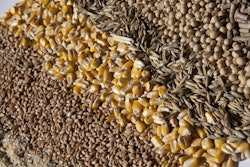The overnight session saw significant volatility with the U.S. dollar selling off sharply following the FOMC statement and then recovering in the overnight to an index level of 99.20. Corn, soybeans and wheat all gapped higher in the opening 5 minutes of the night session and spent the remainder of the night backing off of those gains. Corn went into the morning pause unchanged, soybeans are up 1 1/2 cents and wheat gained 2 1/4 cents in the overnight session.
Yesterday, the FOMC issued their latest statement which indicated that a rate increase will be unlikely in the April meeting. The statement issued announced that they will make a rate hike after they are “Reasonably Confident” inflation will move back to the 2 percent target and after further improvement in the labor market. The dollar traded sharply lower following the statement as traders viewed this as continuation of extremely low interest rates and the delay of any interest rate hike that was expected in the near future.
Export sales were within analyst expectations for soybeans and wheat, but on the low side of expectations for corn. Wheat booked 391,900 metric tons for the week ending March 12th, up 12 percent from the previous week. Corn sales were reported at 502,300 metric tons up 20 percent from last week but on the low side of expectations which ranged from 500,000-700,000 metric tons. Soybean sales fell within analyst expectations with 342,000 metric tons booked for 14/15 delivery. Expectations for soybean sales ranged from 250,000-450,000 metric tons.
Yesterday, the EIA announced that ethanol production increased 3,000 bpd to 947,000 barrels per day. This is the second consecutive week of ethanol production gains. This year’s ethanol production is now up 5.7 percent compared to last year’s production during the same time period. In the March WASDE report the USDA lowered its corn used for ethanol to only a 1.3 percent increase year over year. Recently, there has been talk of Brazilian ethanol being imported into the U.S. due to the strong shift in currency rates. This news is a negative sign for the ethanol and corn markets.













